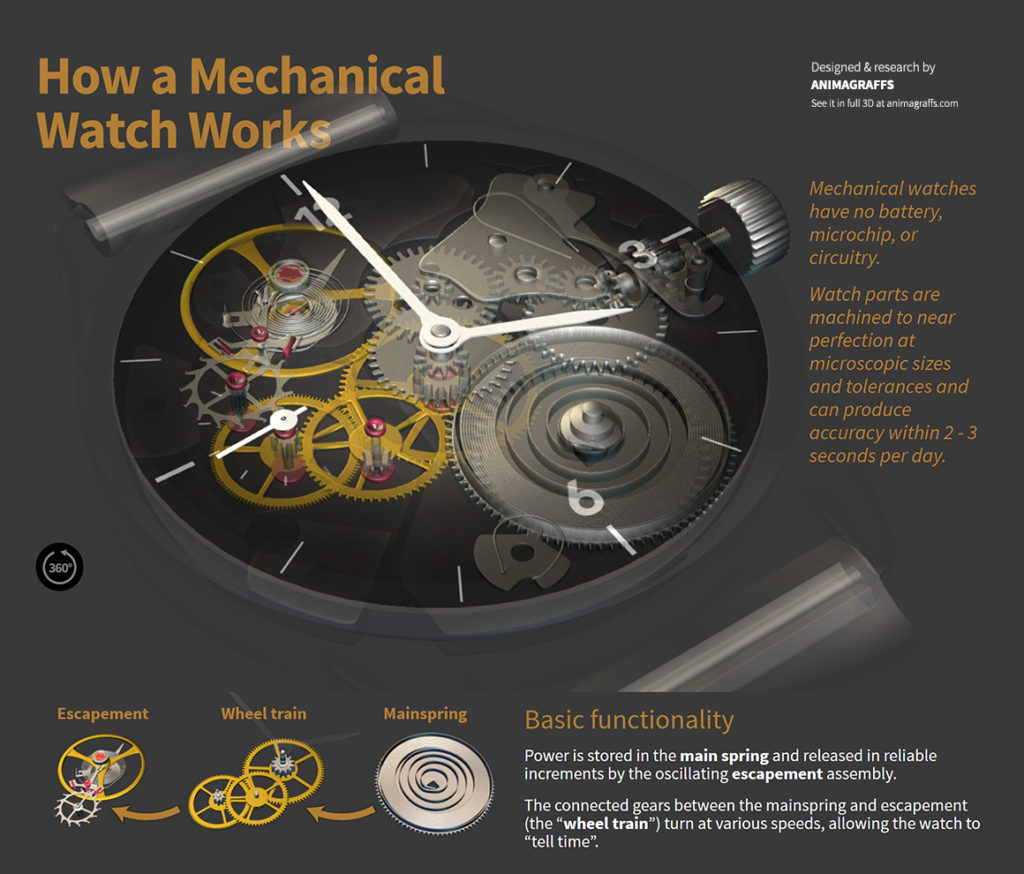I try to follow nutritional and exercise scientific advancements and its facts, through research reviews, reading the research that has been performed and published, etc. But for the past month and a half, I have been searching for a source, that it is not one of the media publications, a journal or engineering paper on this specific topic, mechanical watches.
The main thing was to find a way to explain mechanical movements, in a more technical and graphical way. Something that makes the internals of a watch understandable for everyone. I have found a couple of books but it was too premature for me to write something without reading it all.
One of the easiest and comprehensive tutorials I have found is from Animagraffs. I first stumbled upon it on YouTube, trying to find videos of movements. To my surprise, Animagraffs (Jacob O’Neal) was already ahead of me and had the following video posted. The video is great at explaining the basics of mechanical movements, its parts and functionality. You can watch the video below:
As a basic guideline, we can decompose the watch movement in four sections: Mainspring, the train, the escapement, and the controller. The watch movement includes many more components than this, and we will visit a few of them on each section as we go.

- The Mainspring: This is a fine spring that stores the external energy exerted on it. This energy is later transferred throughout the watch movement components, to make the hands of the watch move. The mainspring is stored in the barrel, which in this case, it also acts as a gear connected to the train.
- The Train: The train is a series of gears that transfer the energy from the mainspring to the escapement wheel.
- The Escapement: The escapement wheel, which helps by regulating the energy that escapes the mainspring. This happens in conjunction with the pallet fork, which stops the escapement wheel by stopping it when it engages the jewels (escape wheel teeth) on each side of the fork to the teeth of the escapement wheel (gear). The lever connected to the pallet fork pushes the impulse pin that is attached to the balance wheel.
- The Controller: The component worth mentioning here is the balance wheel, which is a perfectly balanced wheel, hence the name. The balance wheel is also attached to the hairspring. The hairspring allows the balance wheel to bounce back to its original position creating a rhythm, which we call beat.
You can see another cool and quick explanation of these components, in action, in the following video:
As previously mentioned, there are way more components than the ones listed in this quick article. The ones listed here give you a minimum baseline of understanding of a mechanical movement. I hope this has been useful for you as it was for me. I will add more of this content on the site as we progress on this journey.
Until next time,
DL
Discover more from 3DLANES
Subscribe to get the latest posts sent to your email.

